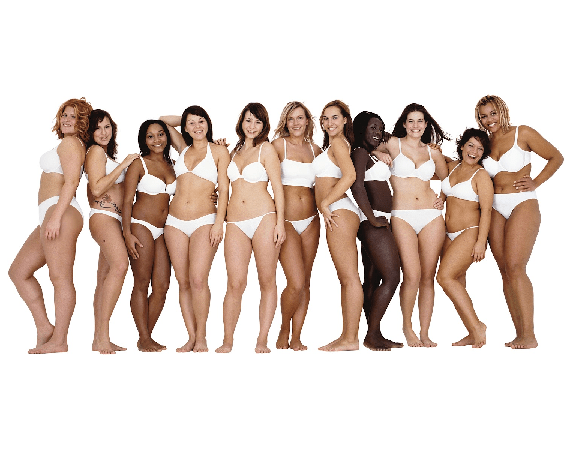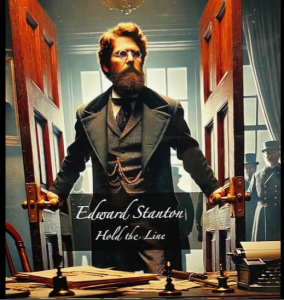The beauty industry is one that has dominated in terms of sales and marketing for decades. It is a field that many are attracted to, yet few take the time to understand how their projected images affect one’s self-image. Though, as many say, “beauty is in the eye of the beholder,” one company realized that beauty lies within all.
In 2004, Dove launched the Campaign for Real Beauty, which was meant to broaden the narrow view of beauty within society.1 Before the release of the Campaign for Real Beauty, Dove attempted to highlight the creamy, moisturizing feel that defined the soap brand by emphasizing the beauty in pampering oneself – oftentimes depicting a beautiful, thin woman, with red lipstick and painted nails. Taking a drastic risk in their marketing strategy, Dove sought to promote a new idea of beauty; they did so by using real women whose looks and weight were far different from the typical model—and it was a smashing success.2 But this success would not have been possible without the creative minds behind the project and the annihilating of what society says beauty should be.

For many decades, the beauty industry has marketed its products with images of the newest, most glamorous, most chic new looks for individuals to try. People love the process of making themselves feel beautiful, and tend to jump at the newest, most popular products to arrive in the market. Specifically, the beauty industry targets women by appealing to the “ideal” image of beauty that is popular at that particular point in time. The most used approach they take is in convincing women that what is most important about them is the way they look. The most common ideal of beauty (especially prevalent since the post-war 1950s) dominant in the minds of many today, is a tall, thin woman who is caked with flawless makeup with silky hair and a straight, white smile. Beauty is not only something that women feed off of, but it has become something people look to to define their own self-confidence. Magazines, games, and social media alike are doused with unrealistic portrayals of beauty. Though there is a high awareness of the impact that media’s idealization of thinness has on women’s health, the industry remains strict to a narrow range of cultural images of attractiveness.3 Before the Dove Campaign for Real Beauty was launched, women, for many years, became used to seeing themselves as being “less-than” that of others. In adapting to change, the beauty industry follows closely the shifting trends of the times. For example, the 1950s was characterized by rolled bangs and winged eyeliner, the 1980s by bold eye shadow and crimped hair, and the 2000s by fake tans and lip gloss.4 In following these trends, women have long adapted to the societal standard of beauty in an attempt to better fit in. These stereotypical views of the ideal woman is what not only feeds the minds of young girls, but it wrecks the body images of millions of women who don’t see themselves as beautiful. In general, the beauty industry tends to feed the minds of many with their own definition of beauty.
One of the key creators and marketing geniuses behind the Campaign for Real Beauty was Joah Santos. As the Chief Creative Officer and founder of NYLON (a multi-platform media company), Santos paved the way for the creative advertising techniques that were used in a multitude of famous ads. Santos became widely known after his making of the P.O.V. (purpose, originality, value) marketing strategy, which was first used to create the Dove Campaign for Real Beauty.5 Within this strategy, he hoped to simplify marketing by giving value to the content of an ad. Content, he explains, gives a story to the brand; the effect of the story is what matters most. There must be a link between a product and the brand’s purpose in order for the technique to make sense. This, in turn, allows the company to build up its credibility.
His focus on evolving a brand based on its story was revolutionary—he set the stage for perhaps the greatest campaign of the twenty-first century. In addition to this, Santos’ ideas led to the Dove Real Beauty Sketches, which was a short film led by Hugo Viega. Viega, a Portuguese copywriter, focused on the concept of risk-taking in his creative, rather than figuring out what would best sell. In his commercial campaign for Dove, Viega hoped to show women that they are more beautiful than they think. To do so, he had various women describe themselves to a sketch artist who could not see them. The sketch artist then drew images of those same women, as described by strangers who had met them the day before. When these images were compared, the stranger’s image was by far more flattering and accurate for every woman who participated. Not only did this video go viral in 2013, but it is said to be one of the most powerful and thought-provoking films Dove has ever released.6 These two men had an enormous role within the Campaign for Real Beauty, with their “test-and-learn” strategy taking them a long way. Ultimately, they sought to express to women that their imperfections do not define who they are. Without them, the campaign would not have grown into what it is today.
The conversation of beauty in today’s society is one that is standardized across the board. The projected images of beauty within media and advertisements alike are what influence the way women see themselves in relation to the rest of the world. These idealized images that are prevalent in advertising are what make consumers feel that they must strive for some unattainable goal of beauty. This, in turn, makes them feel threatened in a way that has a negative effect on their self-esteem.7
Humans in general have a tendency to compare some aspect of the self to that of others, and this is known as social comparison. Social comparisons take place when individuals are heavily influenced by their social environment.8 Projecting ultra-thin models as a beauty ideal comes with its costs. The general conclusion among researchers is that the exposure to thinness-depicting media is related to greater body dissatisfaction, lower body self-esteem, and self-objectification, especially among young girls.9 Social comparison allows one to understand the projected symbols from media, and how they tend to lower women’s self-assurance in society. The advertising industry routinely utilizes the theory to sell beauty products.10 Men, too, are affected by such standards of beauty; seeing such projected attributes in media, men feel as if they cannot reach those standards, ultimately becoming dissatisfied with their own image.11 Societal standards of beauty have been, and will likely always be, a driving factor in the way individuals view themselves.

In 2004, Dove, in conjunction with the Downing Street Group (a research consulting firm), decided to conduct a massive research experiment to verify the hypothesis that women tend to view themselves as less than optimal. For this, leaders of the Campaign for Real Beauty traveled to ten different countries, surveying a total of three thousand women to find out how they felt about their own appearance. In confirmation of Dove’s guess, the research concluded that merely two percent of women define themselves as being beautiful, and only nine percent described themselves as being attractive.12
The Dove Campaign for Real Beauty was one that was groundbreaking, revolutionary, and bold. Dove began as a company creating moisturizing beauty bars, and evolved into one that insists that women be comfortable in their own skin. This campaign not only encouraged confidence, but it widened the narrow view of what is considered “beautiful” by societal standards (i.e. thinness, fair skin, etc.).
Feminism (the advocacy of women’s equality in society) is a concept that is present in the Dove Campaign for Real Beauty. From the 1960s on, women have empowered themselves to advocate for their own definitions of beauty, not allowing a patriarchal society to define them. For too long, women were told to accept their roles in society and live domestic lives as housewives and caretakers. There has been a long effort to include emancipatory ideals in marketing campaigns, most often met with little transformation.13 To put it simply, the fight for all body types, skin tones, and hair types to be expressed equally in media campaigns has been long fought, yet most advertisers stick to stereotype models, lacking diversified representation. Before the 1960s, gender roles were reinforced by mass media and popular culture. However, after WWII, because women made up a large percentage of the postwar labor force, things began to change for women and their roles in society.14 Even in the 1950s, women began to take on new roles in society even as they were encouraged to play traditional roles. These new roles represented the beginning of women breaking away from the conformist ideals of that time period.
In relation to the twenty-first century, women have continued to advocate equality via feminist activism. The Dove Campaign for Real Beauty is a prime example of this, as it pulls away from the commonplace, stereotypical view of women in society today. In using “feminist consumerism,” the Campaign for Real Beauty has the power to disrupt gender norms with its engagement in grassroots activism, as well as in its critiques of the beauty industry.15

In all, the Dove Campaign for Real Beauty is one that has set the stage for groundbreaking change in the minds of women in today’s society. Not only have some beauty companies restructured their use of models and media strategies, but the idea of using “real women” has been popularized. In kicking off a conversation of women’s roles in society’s standards of beauty, the campaign reframed the very idea of female attractiveness. The empowerment of women to be confident in their own skin is what drove this campaign; it not only celebrated the natural beauty of women around the world, but it reinforced the idea that societal standards do not define who you are.
- Encyclopedia of Major Marketing Campaigns, 2007, s.v. “Unilever PLC,” by Jonathan Kolstad and Judson Knight. ↵
- Encyclopedia of Major Marketing Campaigns, 2007, s.v. “Unilever PLC,” by Jonathan Kolstad and Judson Knight. ↵
- Sarah Grogan, Body Image : Understanding Body Dissatisfaction in Men, Women and Children (London: Routledge, 2008), 11-12. ↵
- Fashion, 2015, s.v. “Beauty by the Decade: The Hair and Makeup Trends We Got from Each Era,” by Sarah Harris. ↵
- Revolvy, 2013, s.v. “Dove Real Beauty Sketches.” ↵
- Revolvy, 2013, s.v. “Dove Real Beauty Sketches.” ↵
- Encyclopedia of Gender in Media, 2012, s.v. “Social Comparison Theory,” by Neil Alperstein. ↵
- Encyclopedia of Gender in Media, 2012, s.v. “Social Comparison Theory,” by Neil Alperstein. ↵
- Kimberly Bissell and Amy Rask, “Real women on real beauty: Self-discrepancy, internalisation of the thin ideal, and perceptions of attractiveness and thinness in Dove’s Campaign for Real Beauty,” International Journal Of Advertising 29, no. 4 (November 2010): 644. ↵
- Donnalyn Pompper, Rhetoric of femininity: female body image, media, and gender role stress/conflict (Lanham: Lexington Books, 2017), 15. ↵
- Encyclopedia of Gender in Media, 2012, s.v. “Social Comparison Theory,” by Neil Alperstein. ↵
- Encyclopedia of Major Marketing Campaigns, 2007, s.v. “Unilever PLC,” by Jonathan Kolstad and Judson Knight. ↵
- Josée Johnston and Judith Taylor, “Feminist Consumerism and Fat Activists: A Comparative Study of Grassroots Activism and the Dove Real Beauty Campaign,” Signs 33, no. 4 (2008): 15. ↵
- Khan Academy, 2016, s.v. “Women in the 1950s,” by Michelle Getchell. ↵
- Josée Johnston and Judith Taylor, “Feminist Consumerism and Fat Activists: A Comparative Study of Grassroots Activism and the Dove Real Beauty Campaign,” Signs 33, no. 4 (2008): 941-66. ↵




95 comments
Julia Deais
I think that this is a step in the right direction towards a bright future for women. This campaign shows that all women, regardless of their shape, size, or race, all have something unique to offer the world and all women should be appreciated for everything we go through. Society’s standards are not how we should be judging women. We should be judged by what on the inside like personality and integrity. What’s on the outside shouldn’t influence your opinion on someone.
Lorenzo Rivera
I am personally quite fond of this campaign by Dove. It is something new and refreshing, and is something that we need in our society. It was a brave choice by the company, as they were moving away from something that even they knew was working for their products for many years. They have shown that they can spread a brand new message, and a positive one that we as a country need. This article did a great job of showing this from start to finish.
Madison Guerra
I really support the real beauty campaign by Dove. It is something new and refreshing to see compared to the stereotypical skinny “beautiful” models that are everywhere from clothing lines, to makeup. This is a topic that should be talked about more but nobody ever does. It is no wonder that Dove had such success from the ad campaign because slowly our society is changing for the better and widening the idea of what beauty really is.
Micaela Cruz
It was a bold move by Dove to follow through with this campaign but I believe it was well worth it. When they first started this campaign, I was young and didn’t realize exactly what they were doing but now that I’m older, I see that their main goal is to give women the understanding that we are all beautiful and every body is unique. The message is an amazing one and the country needs more of that positiveness. The article itself was very informative from beginning to end.
Ysenia Rodriguez
As a little girl, I had seen the Dove “Campaign for Real Beauty” ads and noticed the difference between them, and the “traditional” ways of advertising companies. In Dove commercials, women of all sizes and colors were being represented. I think the “Campaign for Real Beauty” was not only a brilliant idea, but a risky one, yet the fact that it was received well throughout society shows progress in breaking the “ideal” standard women try so hard to achieve. Everyone no matter their color, size, height, and even gender, deserves to feel beautiful and comfortable in their own skin.
Karina Cardona Ruiz
I just want to start off saying that your article was nicely done and I can tell you put a lot of effort into researching and writing it. I think Dove’s campaign is a step in a positive direction that hopefully other companies in the beauty industry will follow. I remember seeing the video of the women with the sketch artist on YouTube and I thought it was really nice to see how others viewed the women as beautiful and kind of sad how the women didn’t see themselves the same way. I think it’s easy for us to pick ourselves apart and worry about every little flaw because we are so used to seeing unrealistic portrayals of beauty in ads. It’s escalated to the point where we are more inclined to just “fix” something if we don’t like it through plastic surgery instead of accepting and loving the characteristics that make us who we are.
Jasmine Rocha
I feel that Dove created a new pathway for a new meaning of beauty in the beauty industry. It’s amazing the amount of research and work that was put into this project and the spirit through this project to make women other than models but those of different height and body shapes and characteristics to be part of this new beauty campaign for advertising. The idea of beauty has changed throughout the years but there has always been that one standard during different periods but this is saying that all women and all standards are beautiful.
Harashang Gajjar
The Dove Campaign for Real Beauty demonstrated that social- focused content can drive sales without product messaging. Because Dove didn’t want the campaign to look overtly commercial, there wasn’t product messaging anywhere on the ads. The Dove social program proves this, as it had no product messaging, yet women could not stop talking about the brand.
Daniela Duran
I am truly impressed by the impact that this campaign had, as well as by the findings that the research provided. It is completely true that as women we usually fall in the trap of social comparisons, trying to find in what ways we differ from the women in advertisements and media. I consider that the creators of this campaign not only provided a larger success and popularity frame for Dove, but why also created a very positive impact in society. Reminding women that our beauty is not defined by the stereotypes and the idealistic images is social media is really important, especially when so much psychological problems such as anorexia and bulimia are invading our society. I like the idea of using “real women” in advertisements, because it reminds us that current media is not showing a reality, but a simple utopian world instead. We should all be proud of being “real women” and being beautiful in our own way. That’s how God made us, and that’s why we are beautiful.
Pamela Callahan
After reading this article, I watched a couple of the Dove campaign videos and was very impressed. I thought the video in which the man sketched women’s descriptions of themselves and then the descriptions from others was my favorite one. It makes me sad that women are so obsessed with the beauty trends and styles of society and have come to accept them as the new norm. Instead, we need to find beauty in ourselves instead of looking for how we can improve it in the eyes of others.